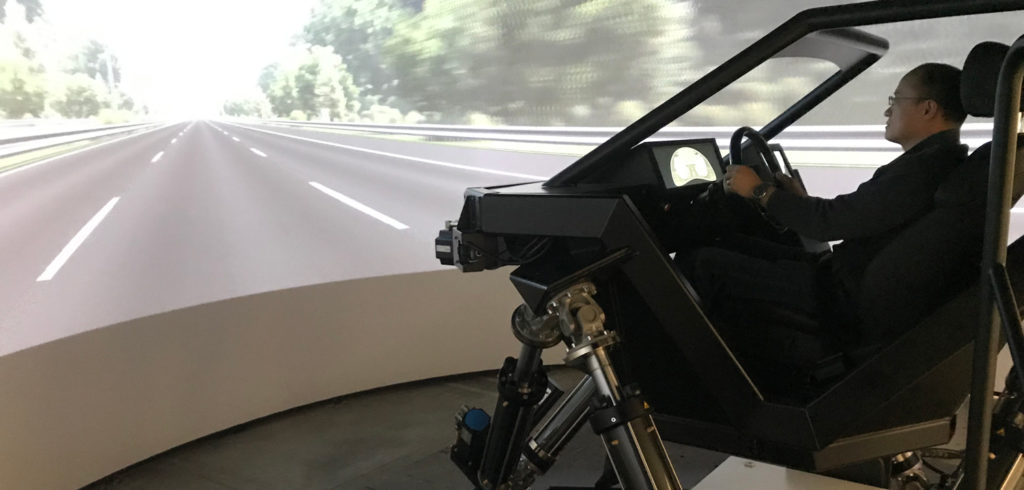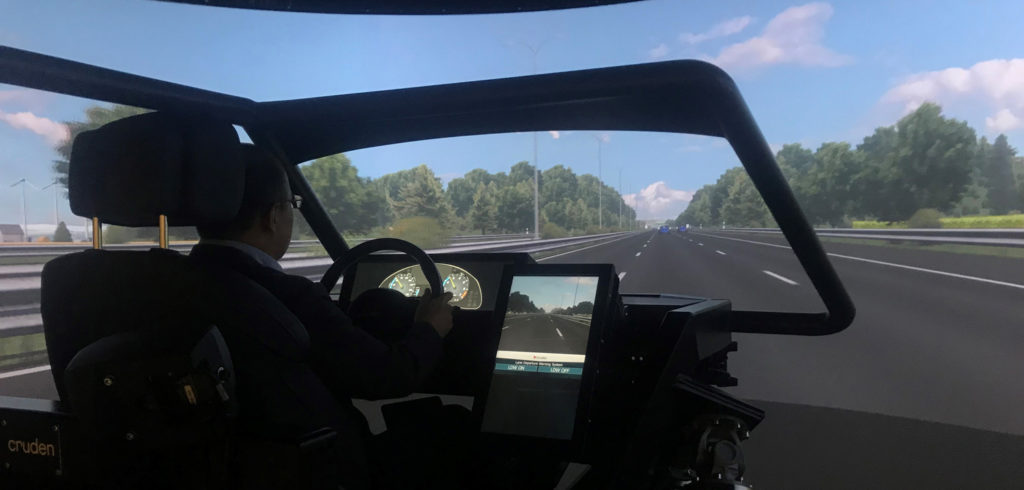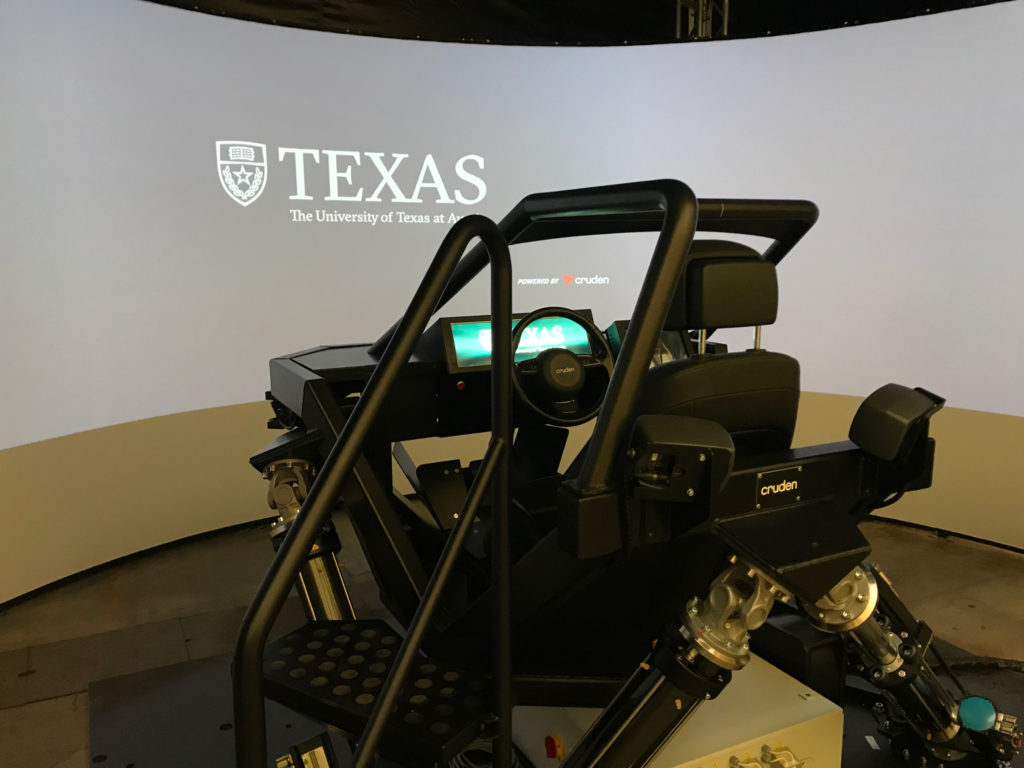The University of Texas at Austin (UT-Austin) has installed a fully integrated high-fidelity Cruden driving simulator to facilitate academic research into autonomous driving systems.
Cruden has completed the installation of an automotive driver-in-the-loop simulator at UT-Austin. One of North America’s best-respected research institutions, UT-Austin’s Walker Department of Mechanical Engineering will utilize the Cruden AS1 motion-based system to add human driver input to its hardware-in-the-loop (HIL) test setup, for research into the performance of autonomous vehicle control systems.
UT-Austin’s requirement for an automotive simulator that combined HIL and driver-in-the-loop (DIL) systems meant specifying a bespoke unit capable of rendering a multitude of driving environments and vehicle types easily and seamlessly, and as close to reality as possible.
The Cruden simulator integrates with UT-Austin’s existing dSpace Scalexio modular real-time hardware simulation system and the dSpace ASM vehicle and traffic model. The system is prepared for multi-agent simulations to assess traffic scenarios with multiple ego vehicles, including their sophisticated vehicle dynamics.
This combination of multi-agent simulation and DIL simulator is an industry first, with potential in subjective and objective scenario examinations and for research into future mobility programs. The result is a realistic representation of real-life events with humans behind the simulator controls.
The simulator has been specified in close co-operation with Prof. Junmin Wang, UT-Austin’s director, Mobility Systems Laboratory at the Department of Mechanical Engineering, and Accenture endowed professor. With the advanced specification and system flexibility to integrate any number of variables, UT-Austin expects to forge closer ties with more automotive OEMs and Tier 1 suppliers on future research and development projects.

“The Cruden system affords us the luxury of testing and validating autonomous vehicle control systems exclusively or as part of a wider scope of research where human behaviors and interactions with these systems are repeatedly monitored and observed in real time.
“The flexibility and ease with which the hardware and software work together enables us to conduct repeatable and measurable research on accurate representations of the vehicles, the prevailing driving environment and numerous scenarios in which a driver may encounter,” said Wang.
“UT-Austin is one of just a few universities in the USA to have a dynamic motion-based system such as this and it will enable our faculty to accelerate our research capabilities into future autonomous technology.
“We need to equip our students with the knowledge and expertise that employers are demanding. Having a specialized tool such as this enables us to train the next generation of engineers in a connected world.
“Outside of our own department, we see the simulator benefiting studies in courses including psychology and human behavioral patterns in driving or in the medical field testing the side-effects of driver impairment – all in a safe controlled environment.”
Maarten van Donselaar, CEO of Cruden, said, “The installation of Cruden’s advanced simulator at UT-Austin showcases the flexibility of our systems to suit the needs of virtually any operation from engineers progressing from desktop simulation through to OEMs, Tier 1s and world-class academic institutions. “Our motion-based simulators bring a whole new level of accuracy for assessing vehicle dynamics, active environments and human behaviors within these innovative systems.”



